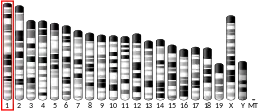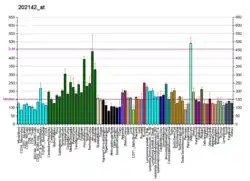| COPS8 | |||||||||||||||||||||||||||||||||||||||||||||||||||
|---|---|---|---|---|---|---|---|---|---|---|---|---|---|---|---|---|---|---|---|---|---|---|---|---|---|---|---|---|---|---|---|---|---|---|---|---|---|---|---|---|---|---|---|---|---|---|---|---|---|---|---|
| |||||||||||||||||||||||||||||||||||||||||||||||||||
| Identifiers | |||||||||||||||||||||||||||||||||||||||||||||||||||
| Aliases | COPS8, COP9, CSN8, SGN8, COP9 signalosome subunit 8 | ||||||||||||||||||||||||||||||||||||||||||||||||||
| External IDs | OMIM: 616011 MGI: 1915363 HomoloGene: 4882 GeneCards: COPS8 | ||||||||||||||||||||||||||||||||||||||||||||||||||
| |||||||||||||||||||||||||||||||||||||||||||||||||||
| |||||||||||||||||||||||||||||||||||||||||||||||||||
| |||||||||||||||||||||||||||||||||||||||||||||||||||
| |||||||||||||||||||||||||||||||||||||||||||||||||||
| Wikidata | |||||||||||||||||||||||||||||||||||||||||||||||||||
| |||||||||||||||||||||||||||||||||||||||||||||||||||
COP9 signalosome complex subunit 8 is a protein that in humans is encoded by the COPS8 gene.[5][6][7]
The protein encoded by this gene is the smallest of the eight subunits of COP9 signalosome, a highly conserved protein complex that functions as an important regulator in multiple signaling pathways. The structure and function of COP9 signalosome is related to that of the 19S regulatory particle of 26S proteasome. COP9 signalosome has been shown to interact with SCF-type E3 ubiquitin ligases and act as a positive regulator of E3 ubiquitin ligases. Alternatively spliced transcript variants encoding distinct isoforms have been observed.[7]
References
- 1 2 3 GRCh38: Ensembl release 89: ENSG00000198612 - Ensembl, May 2017
- 1 2 3 GRCm38: Ensembl release 89: ENSMUSG00000034432 - Ensembl, May 2017
- ↑ "Human PubMed Reference:". National Center for Biotechnology Information, U.S. National Library of Medicine.
- ↑ "Mouse PubMed Reference:". National Center for Biotechnology Information, U.S. National Library of Medicine.
- ↑ Chamovitz DA, Deng XW (Sep 1995). "The novel components of the Arabidopsis light signaling pathway may define a group of general developmental regulators shared by both animal and plant kingdoms". Cell. 82 (3): 353–4. doi:10.1016/0092-8674(95)90423-9. PMID 7634324.
- ↑ Groisman R, Polanowska J, Kuraoka I, Sawada J, Saijo M, Drapkin R, Kisselev AF, Tanaka K, Nakatani Y (May 2003). "The ubiquitin ligase activity in the DDB2 and CSA complexes is differentially regulated by the COP9 signalosome in response to DNA damage". Cell. 113 (3): 357–67. doi:10.1016/S0092-8674(03)00316-7. PMID 12732143. S2CID 11639677.
- 1 2 "Entrez Gene: COPS8 COP9 constitutive photomorphogenic homolog subunit 8 (Arabidopsis)".
External links
- Human COPS8 genome location and COPS8 gene details page in the UCSC Genome Browser.
Further reading
- Schwechheimer C, Deng XW (2001). "COP9 signalosome revisited: a novel mediator of protein degradation". Trends Cell Biol. 11 (10): 420–6. doi:10.1016/S0962-8924(01)02091-8. PMID 11567875.
- Wolf DA, Zhou C, Wee S (2004). "The COP9 signalosome: an assembly and maintenance platform for cullin ubiquitin ligases?". Nat. Cell Biol. 5 (12): 1029–33. doi:10.1038/ncb1203-1029. PMID 14647295. S2CID 37458780.
- Chamovitz DA, Wei N, Osterlund MT, et al. (1996). "The COP9 complex, a novel multisubunit nuclear regulator involved in light control of a plant developmental switch". Cell. 86 (1): 115–21. doi:10.1016/S0092-8674(00)80082-3. PMID 8689678.
- Hillier LD, Lennon G, Becker M, et al. (1997). "Generation and analysis of 280,000 human expressed sequence tags". Genome Res. 6 (9): 807–28. doi:10.1101/gr.6.9.807. PMID 8889549.
- Seeger M, Kraft R, Ferrell K, et al. (1998). "A novel protein complex involved in signal transduction possessing similarities to 26S proteasome subunits". FASEB J. 12 (6): 469–78. doi:10.1096/fasebj.12.6.469. PMID 9535219. S2CID 25424324.
- Wei N, Tsuge T, Serino G, et al. (1998). "The COP9 complex is conserved between plants and mammals and is related to the 26S proteasome regulatory complex". Curr. Biol. 8 (16): 919–22. doi:10.1016/S0960-9822(07)00372-7. PMID 9707402. S2CID 13873982.
- Naumann M, Bech-Otschir D, Huang X, et al. (2000). "COP9 signalosome-directed c-Jun activation/stabilization is independent of JNK". J. Biol. Chem. 274 (50): 35297–300. doi:10.1074/jbc.274.50.35297. PMID 10585392.
- Cohen H, Azriel A, Cohen T, et al. (2001). "Interaction between Interferon Consensus Sequence-binding protein and COP9/signalosome subunit CSN2 (Trip15). A possible link between interferon regulatory factor signaling and the COP9/signalosome". J. Biol. Chem. 275 (50): 39081–9. doi:10.1074/jbc.M004900200. PMID 10991940.
- Gizatullin RZ, Muravenko OV, Al-Amin AN, et al. (2001). "Human COP9 subunit 8 homolog gene SGN8 Map position 2q37". Chromosome Res. 8 (6): 559. doi:10.1023/A:1009279908306. PMID 11032325. S2CID 12957157.
- Bech-Otschir D, Kraft R, Huang X, et al. (2001). "COP9 signalosome-specific phosphorylation targets p53 to degradation by the ubiquitin system". EMBO J. 20 (7): 1630–9. doi:10.1093/emboj/20.7.1630. PMC 145508. PMID 11285227.
- Lyapina S, Cope G, Shevchenko A, et al. (2001). "Promotion of NEDD-CUL1 conjugate cleavage by COP9 signalosome". Science. 292 (5520): 1382–5. Bibcode:2001Sci...292.1382L. doi:10.1126/science.1059780. PMID 11337588. S2CID 14224920.
- Hoareau Alves K, Bochard V, Réty S, Jalinot P (2002). "Association of the mammalian proto-oncoprotein Int-6 with the three protein complexes eIF3, COP9 signalosome and 26S proteasome". FEBS Lett. 527 (1–3): 15–21. doi:10.1016/S0014-5793(02)03147-2. PMID 12220626. S2CID 39308598.
- Sun Y, Wilson MP, Majerus PW (2003). "Inositol 1,3,4-trisphosphate 5/6-kinase associates with the COP9 signalosome by binding to CSN1". J. Biol. Chem. 277 (48): 45759–64. doi:10.1074/jbc.M208709200. PMID 12324474.
- Strausberg RL, Feingold EA, Grouse LH, et al. (2003). "Generation and initial analysis of more than 15,000 full-length human and mouse cDNA sequences". Proc. Natl. Acad. Sci. U.S.A. 99 (26): 16899–903. Bibcode:2002PNAS...9916899M. doi:10.1073/pnas.242603899. PMC 139241. PMID 12477932.
- Serino G, Su H, Peng Z, et al. (2003). "Characterization of the Last Subunit of the Arabidopsis COP9 Signalosome: Implications for the Overall Structure and Origin of the Complex". Plant Cell. 15 (3): 719–31. doi:10.1105/tpc.009092. PMC 150025. PMID 12615944.
- Uhle S, Medalia O, Waldron R, et al. (2003). "Protein kinase CK2 and protein kinase D are associated with the COP9 signalosome". EMBO J. 22 (6): 1302–12. doi:10.1093/emboj/cdg127. PMC 151059. PMID 12628923.
This article is issued from Wikipedia. The text is licensed under Creative Commons - Attribution - Sharealike. Additional terms may apply for the media files.






